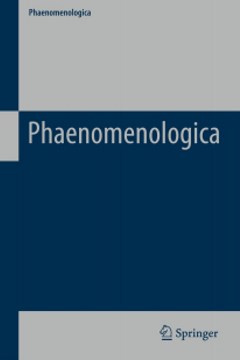Personalities of a higher order
pp. 267-279
Abstract
When he reaches section 56 of the Fifth Cartesian Meditation, Husserl claims he has completed the clarification of the "first and lowest level' of intersubjectivity, or of what he calls the communalization of monads, and can now proceed to "higher levels' that, he says, present "relatively minor difficulties'.1 Discussing various forms of communahzation, Husserl mentions "the pre-eminent types that have the character of "personalities of a higher order''.2 In using this phrase, Husserl is in effect attributing personal characteristics to certain kinds of social groups as well as to individuals. He does not follow up here on the precise manner in which such attribution is justified, and although the expression "personalities of a higher order' makes its appearance in other works (e.g., The Crisis),3 they likewise lack any detailed justification of the use of such a phrase. We might thus suppose that Husserl is merely indulging in a façon de parler, buf if we consult the manuscripts on intersubjectivity, in particular those of volume 14 of Husserliana, dating from the 1920s,4 we find that Husserl takes this expression very seriously indeed.
Publication details
Published in:
Carr David (1987) Interpreting Husserl: Critical and comparative studies. Dordrecht, Kluwer.
Pages: 267-279
DOI: 10.1007/978-94-009-3595-2_14
Full citation:
Carr David (1987) „Personalities of a higher order“, In: D. Carr (ed.), Interpreting Husserl, Dordrecht, Kluwer, 267–279.



